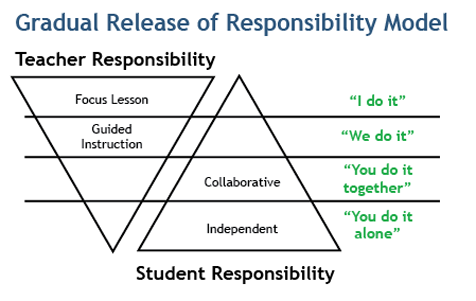So, your school has bought or created a synthetic phonics program. It provides a scope and sequence for all teachers to follow. You have some high-quality resources at your disposal (including, of course, the free teacher resources from Phonics Hero) and you know the principles of synthetic phonics instruction. The question is: What does an effective phonics lesson look like? This blog aims to shed some light on effective phonics lesson design and preparation, drawing on the principles of explicit instruction and on Professor John Hattie’s Visible Learning research.
Hattie has synthesized over 800 meta-studies on learning and achievement and has identified instructional routines that have the biggest impact on student learning. His latest book, written with Douglas Fisher and Nancy Frey, is Visible Learning for Literacy, Grades K-12: Implementing the Practices That Work Best to Accelerate Student Learning. The book opens with the statement:
Every student deserves a great teacher, not by chance, but by design. John Hattie
Most learning does not happen by chance. Teachers must design, set up and implement lessons that use strategies that have a significant positive influence on learning. Have a look at Hattie’s ‘influence barometer’ below, it starts at -0.2 with strategies that have a negative effect (for example, repeating a year) and ends at 1.2 with strategies that have the highest effect. The strategies that teachers use should have an effect size of over 0.4.
 John Hattie’s Influence Barometer
John Hattie’s Influence BarometerWhen learning is visible, students can articulate what they are learning, set learning goals, see errors as opportunities for learning and seek feedback and assistance. We will use John Hattie’s Influence Barometer, peppered with learnings from my own experience, to decode what makes a phonics lesson great!
The best phonics lessons I have witnessed make every second count. That means being fully prepared; no wasted time fiddling with resources or whiteboards, having ready a differentiated bank of decodable words, and implementing a prearranged seating plan which facilitates support for those children who are struggling.
Phonics Hero’s click-and-go Phonics Lessons are designed to make the planning and organising of your phonics lesson easy. Included is 3,700 decodable words, 1,500 nonsense words and 2,400 decodable sentences – all with video, audio and picture support. It’s designed to free teachers up for what they do best – teaching! Check out how it works:
If you’d like to start a 30-day trial of no-prep Phonics Lessons, sign up for a Teacher Account.
Firstly, here is a Word template of this phonics lesson structure for you to use. It follows this routine:
e.g., “Today we are learning to blend sounds together to read new words, using the sounds /s/, /a/, /t/ and /p/. You will be able to read more words in books by yourself.”
Students need to know what they are supposed to learn and why they are learning it. It helps them to retain focus and motivation. If you told a group of students to jump in a pool and swim, without telling them the starting and finishing point, the swimming style or duration, there would be a range of outcomes! When learning goals are made transparent, students have higher confidence that they can reach them. Place the new knowledge/skill/strategy to be learned in the context of what is already known.
e.g., “By the end of this phonics lesson I want you to be able to read accurately at least ten words containing the sounds/phonemes: /a/ and /t/.”
Students need to know how they will know if they have learned the information or skill. Success criteria challenge students, help them to monitor their own progress and motivate them to set personal goals.
The learning intentions and success criteria should be spoken and written on the whiteboard for students to refer to if unsure. Teacher clarity (a combination of points 1 and 2 above) has a very powerful impact on learning, rated by Hattie as 0.9.
Revision helps students to ‘tune in’, activates prior knowledge, consolidates pre-requisite knowledge and skills and supports the movement of knowledge and skills from short-term memory to long-term memory. Hattie rates rehearsal and memorisation as 0.73. There are many ways of revising. These include:
The Gradual Release of Responsibility Model, Pearson & Gallagher (1983), should be used to develop student confidence:
 The Gradual Release of Responsibility Model.
The Gradual Release of Responsibility Model.Explicit, direct instruction is characterised by clear language, a brisk pace, a high level of student response, effective immediate teacher feedback and students practising till mastery. Hattie rates explicit teaching as 0.57 and direct instruction as 0.6.
It’s important that teachers have children go further than reading single words, with the application of the learned skills in sentences and decodable readers. This is the step that I find many teachers omit, maybe because they feel pressed for time, but that is like asking students to prepare all the ingredients for spaghetti bolognese then telling them there is no time to put the ingredients in the pot to make the delicious meal!
 Complete the ‘reading meal’ and move onto decodable sentences and readers.
Complete the ‘reading meal’ and move onto decodable sentences and readers.Application is vital for deep learning and understanding of the relevance of knowledge and skills taught. The student is learning to read and write words for a purpose (so that he can use his phonic knowledge and skills independently in sentences and in extended text, to gain and share meaning), therefore he must be shown how to apply learning to a decodable text. In synthetic phonics instruction, students are asked to independently read ONLY text containing the sounds learned and irregular words they have been explicitly taught. The text used should be of increasing length and complexity – caption, sentence, then page of text – and the skills and knowledge learned should be applied in both reading and writing. Step 6 of Phonics Hero applies the knowledge and skills learnt throughout steps 1-5 to meaningful reading.
 Systematically increase the quantity of text to which you expose the child.
Systematically increase the quantity of text to which you expose the child.Students enjoy games and multisensory activities, but the teacher should carefully select these to give targeted practice. The Child Accounts are an ideal tool for this practice and helps the teacher to individualise the student’s learning program. Some students may need to work on step 1 (knowing the sounds) whereas others may need step 2 (reading with those sounds) or step 3 (spelling with those sounds). Recall of tricky, irregular words can be targeted with steps 4 and 5.
 Phonics Hero’s six step process that teaches children to read and spell with synthetic phonics.
Phonics Hero’s six step process that teaches children to read and spell with synthetic phonics.Once the Child Accounts are set up, teachers can use schedules to assign specific tasks to individuals.

Hattie rates deliberate practice as 0.79.
Review what has been learned and how that learning can be used. This is an opportunity for students to demonstrate their understanding, to share their progress and perhaps set learning goals. The teacher should record the names of students having difficulty or needing an extension. To meet the individual needs of each student, differentiated home readers and targeted practice on the Child Accounts (for remediation or extension) can be given. Teachers can use Phonics Hero’s schedule functionality for this. Hattie rates evaluation and reflection as 0.75. Response to intervention is rated 1.29 in influence on achievement.
Collective Teacher Efficacy is the group belief of teachers in their ability to positively affect students. With an effect size of 1.57, Collective Teacher Efficacy is strongly correlated with student achievement. I hope that the information on phonics lesson structure contained in this blog contributes to your efficacy!